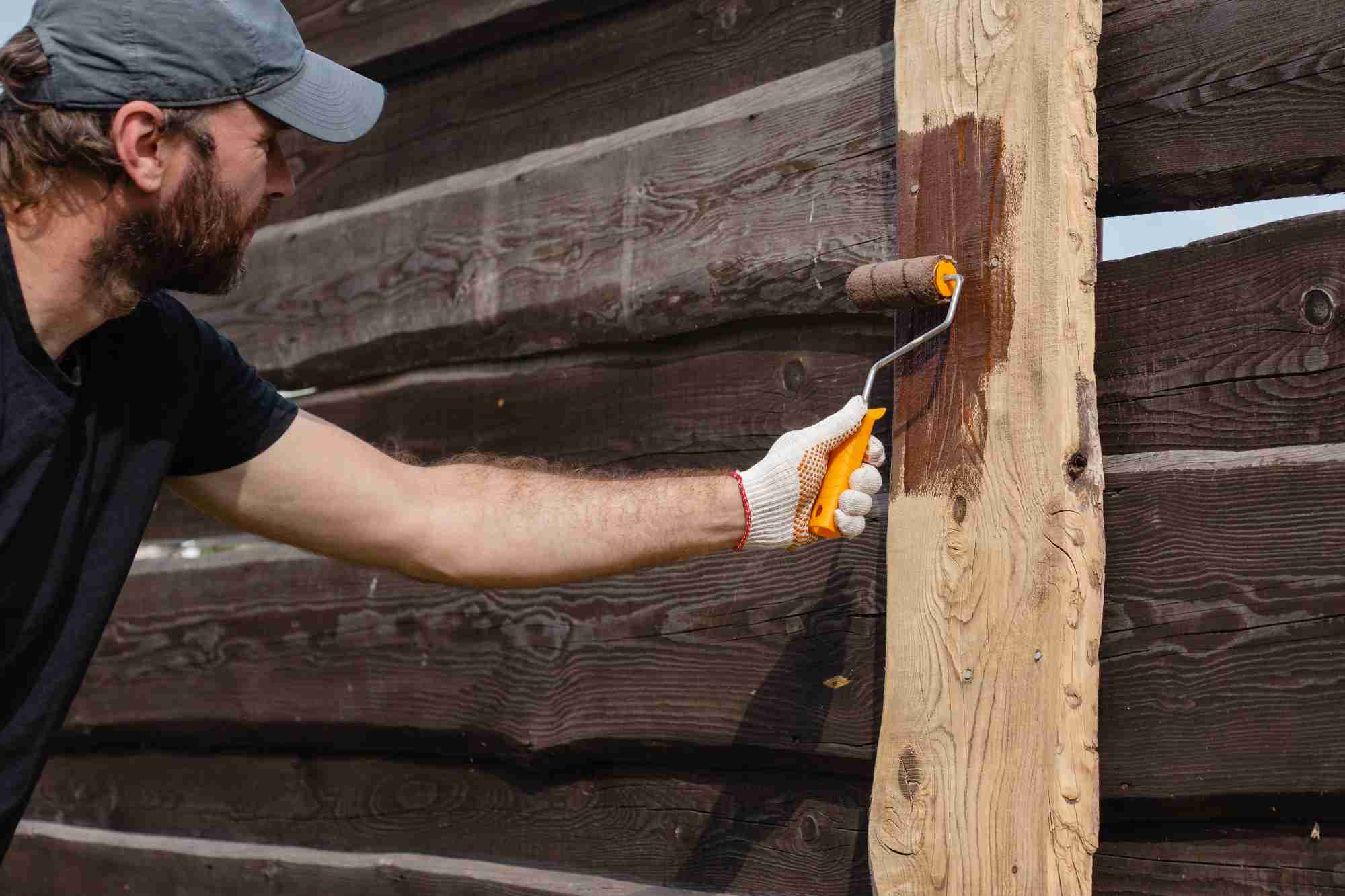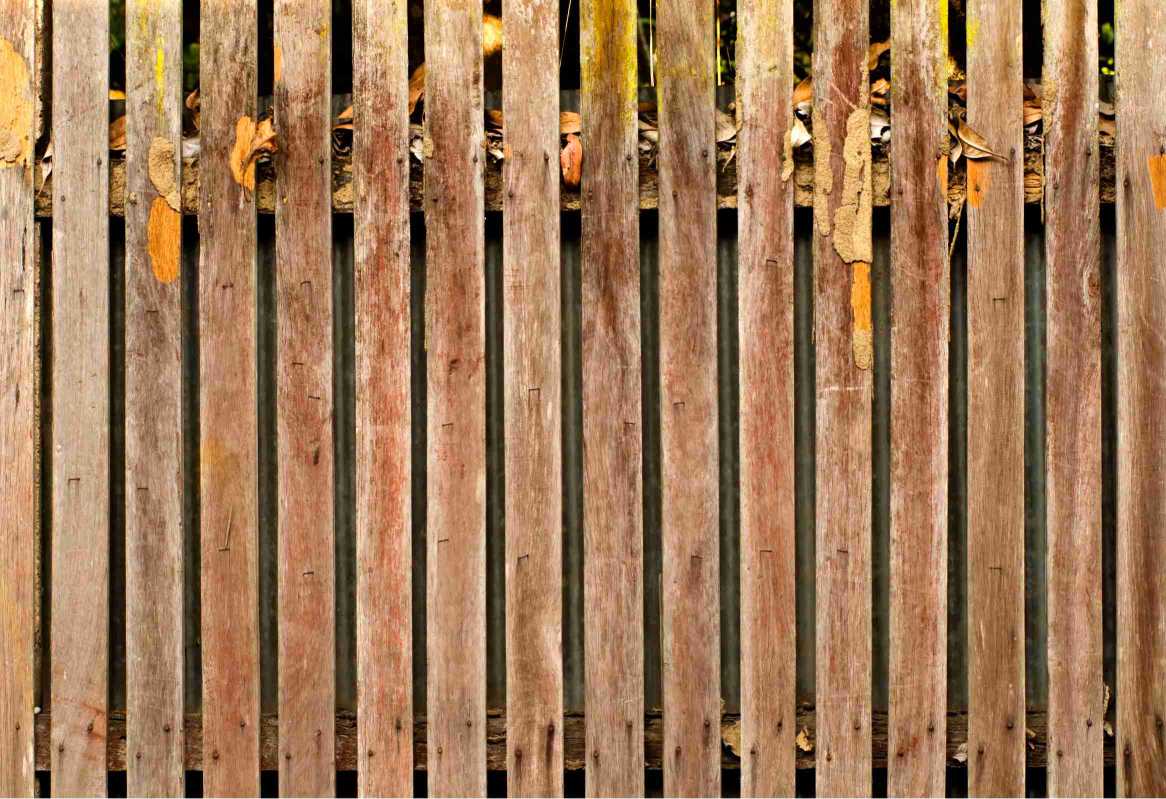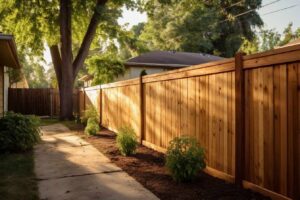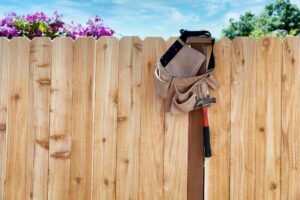How To Make Your Wood Fence Last Longer
Wood fences define property lines and provide both privacy and aesthetic appeal. Preserving their durability is possible with some practical tips. In this post, we’ll explore some ideas to make your wood fence last longer by preventing rot, decay, and other damage, as well as simple waterproofing techniques.
How Can I Make My Wood Fence Last Longer?
By following these recommendations on how to make a wood fence last longer, you’ll significantly extend the lifespan of your fence.
Regular cleaning
Regular cleaning is key to preserving your wood fence. Make it a habit to clean off the fence, remove unwanted vining plants, and wash, sand, or scrape off any deposits every few years. This helps prevent buildup and deterioration over time. Additionally, consider a deep cleaning every 3-5 years to maintain its appearance and structural integrity.
Paint or reseal
Applying multiple layers of paint or a clear polyurethane sealant enhances the fence’s appearance and provides essential protection against the elements. We recommend using latex-based paints for weather resistance. Also, consider painting the bottom of each post with asphalt emulsion for added durability.
Consider using metal posts
Opting for metal posts instead of wooden ones significantly increases the fence’s lifespan. Stainless steel or aluminum posts minimize rusting, especially when finished with paint or a metal finish, ensuring longevity for decades.
Add rot boards
Installing a rot board along the bottom edge of the fence with hardwood fasteners helps absorb moisture, preventing rapid decay. Regularly inspecting and replacing rot boards as needed is the best way to maintain their effectiveness in protecting the fence from moisture-related damage.
Inspect and repair
Consider inspecting your wooden fence annually for signs of damage or deterioration. Check for rot on pickets and posts and promptly repair any issues to prevent further deterioration and prolong the fence’s lifespan. If your fence needs repairs, check out this article to learn how to fix a leaning wooden fence.
Keep it clear of debris
We recommend keeping your fence clear of debris and making sure that plants or structures don’t lean against or over it, which can weaken the structure over time. A good landscaping plan will help you minimize contact with the fence, reducing the need for constant pruning and trimming to maintain its integrity.
What Can I Put on My Wood Fence to Preserve It?

To effectively preserve your wood fence, try applying the following materials that you can easily find at home improvement and hardware stores:
- Wood preservative: Apply two coats of wood preservative to seal it. This helps protect it from the elements, water, and sprinklers.
- Decking oil: If you want to bring out the best of the grain while retaining a natural look, add two coats of decking oil. We recommend opting for clear or natural wood preservers and decking oils.
- Water-repellent preservatives: This is only necessary if the wood has not been pressure-treated, as they inject preservatives during that process.
- Exterior stains and sealants: Apply these to provide additional protection against UV rays and weathering.
How Do I Keep My Wood Fence from Rotting?
To keep your wood fence from rotting, it’s essential to take proactive steps. Rot can compromise the structural integrity of your fence, leading to costly repairs or even replacement.
Check out these strategies to keep your wood fence standing strong against the threat of rot:
Understand what type of rot your fence is exposed to
There are two main types of rot:
- Wet rot: Wet rot occurs due to regular moisture exposure, typically appearing at the base of the fence. Signs include cracked or softened timber, a damp, musty smell, and fungal growth.
- Dry rot: Dry rot stems from continual exposure to harsh, dry environments, such as intense sunlight and hot winds, which can strip away the protective oils on the wood’s exterior. Signs of dry rot include dry and brittle timber, easy breakage, crumbling parts, and a noticeable odor.
Rot-resistant fencing materials
When choosing fencing materials, opt for hardy or rot-resistant options to mitigate the risk of rot. Treated wood can provide added protection against rot and termite infestations. Hardy wood choices include:
- Cedar
- Juniper
- Redwood
- Cypress
Regularly staining
Regularly staining your fence is another effective way to prevent rot. Aim to stain your fence at least once a year, although frequency may vary based on environmental factors such as temperature and rainfall. Spraying the fence with water is a simple test to determine if your stain is still effective. The stain is intact if the water beads on the wood’s surface. If it’s absorbed into the wood, it’s time for a fresh coat of stain.
Keep your fence clean
Keeping your fence clean of debris will help you minimize moisture retention and potential rot. Regularly remove leaves, dirt, and other debris that can accumulate along the fence line, especially near the base where moisture tends to collect.
How Long is a Wood Fence Supposed to Last?

A wood fence typically lasts approximately 15 years. However, with proper maintenance, you can extend its lifespan to around 20 years. This maintenance includes regular cleaning to remove dirt and debris and applying a protective sealant or stain every few years to help prevent moisture damage, rot, and insect infestation.
Promptly addressing any signs of damage, such as loose boards or broken posts, can also prolong the fence’s lifespan. Additionally, choosing a high-quality wood such as cedar or redwood, which naturally resists decay and insects, can further enhance your fence’s longevity.
How Do You Waterproof a Wood Fence?
To waterproof a wood fence, apply a high-quality wood sealant or waterproofing product designed for outdoor use. These products penetrate the wood, forming a protective layer that repels water, resists UV damage, and prevents mold and mildew growth.
Follow these steps for a correct product application:
- Prepare: Ensure the fence is clean and dry before applying the waterproofing product. Remove any dirt, debris, or mildew using a pressure washer or scrub brush. Allow the fence to dry completely before proceeding.
- Apply: Using a foam roller, apply the waterproofing product to the wood fence. The foam roller allows for easy application and ensures that the product penetrates all the small areas of the fence, such as gaps between boards and tight corners. Roll the product evenly across the surface of the wood, working in small sections to ensure thorough coverage.
- Allow to dry: The waterproofing product must dry completely according to the manufacturer’s instructions before exposing the fence to moisture or UV rays. This typically takes a few hours to overnight, depending on the product and weather conditions.
- Repeat: Depending on the product used and environmental factors, you may need to reapply the waterproofing product every few years to maintain the fence’s protection.
Final Thoughts
Regular maintenance, including cleaning, staining, and repairing, is essential to prevent rot, decay, and other forms of damage. Choosing rot-resistant materials, such as cedar or redwood, and utilizing metal posts can further enhance the durability of your fence. Finally, applying waterproofing products and keeping the fence clear of debris help protect it from moisture and environmental elements.


